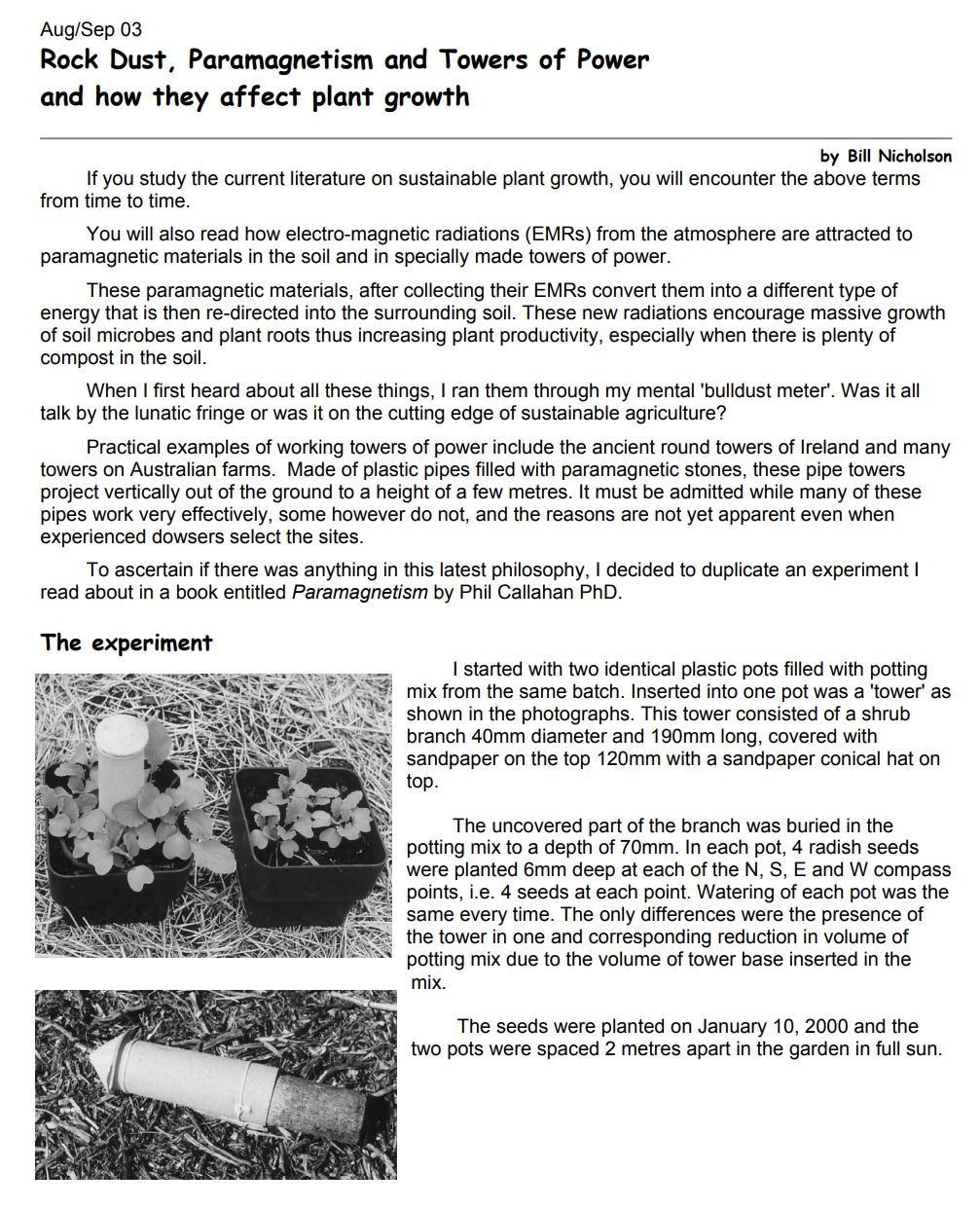Rock Dust Paramagnetism and Towers of Power – Effects on Plant Growth

PDF — rock dust paramagnetism power towers plant growth bill nicholson
Philip Callahan was an American biophysicist and author known for his research in the field of agriculture, particularly for his work on the effects of paramagnetism and rock dust on plant growth. He proposed the theory that paramagnetism in soil, along with the application of rock dust, could enhance plant growth and vitality.
1. Paramagnetism: Callahan’s research focused on the concept of paramagnetism, which refers to the magnetic properties of certain materials when exposed to an external magnetic field. He suggested that soils rich in paramagnetic minerals exhibit enhanced fertility and plant growth due to their ability to interact with natural electromagnetic fields and cosmic energies.
2. Rock Dust: Callahan advocated for the use of rock dust, also known as rock powder or rock flour, as a soil amendment to improve soil fertility and enhance plant growth. Rock dust is composed of finely ground rock particles, typically sourced from volcanic or glacial deposits, and contains a variety of minerals beneficial for plant nutrition.
3. Towers of Power: Callahan proposed the concept of “Towers of Power,” which are tall structures designed to harness and amplify natural electromagnetic energies from the environment. He suggested that these structures could enhance plant growth by creating a beneficial electromagnetic field within the surrounding area.
4. Effect on Plant Growth: Callahan’s research suggested that the application of paramagnetic materials such as rock dust and the use of Towers of Power could improve soil structure, increase nutrient availability, and stimulate root development, leading to healthier and more vigorous plant growth. He conducted experiments demonstrating the positive effects of these techniques on various crops and agricultural systems.
5. Criticism and Controversy: While Callahan’s ideas gained some popularity within the alternative agriculture community, they have also been met with skepticism and criticism from mainstream scientists. Critics have questioned the scientific validity of Callahan’s theories and the lack of empirical evidence supporting the effectiveness of paramagnetism and rock dust in agriculture.
Overall, Philip Callahan’s research on paramagnetism, rock dust, and Towers of Power contributed to discussions about alternative agricultural practices and soil fertility enhancement. While his ideas remain controversial and subject to debate, they continue to inspire further exploration and experimentation in the field of sustainable agriculture and ecological farming.